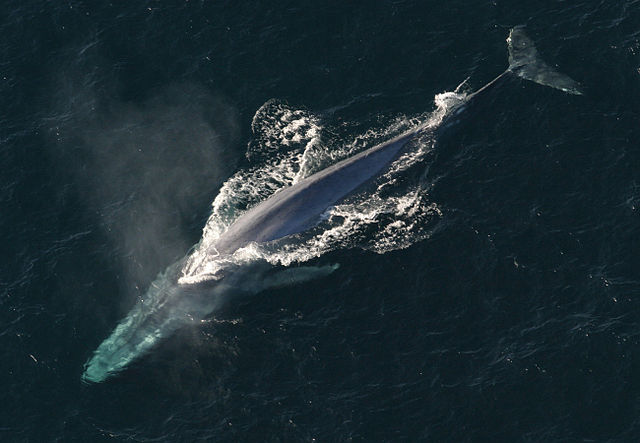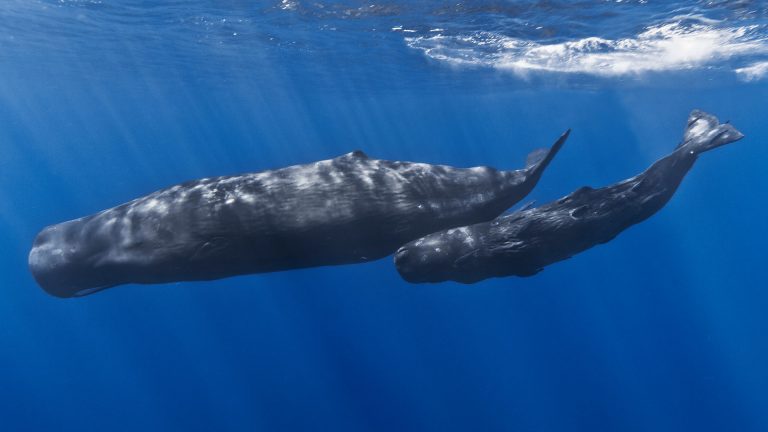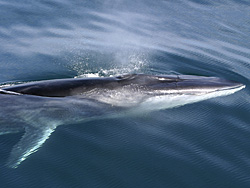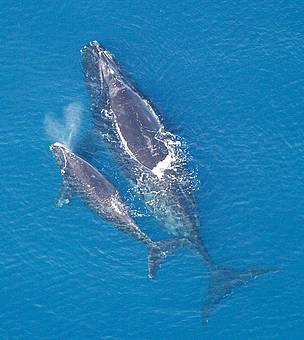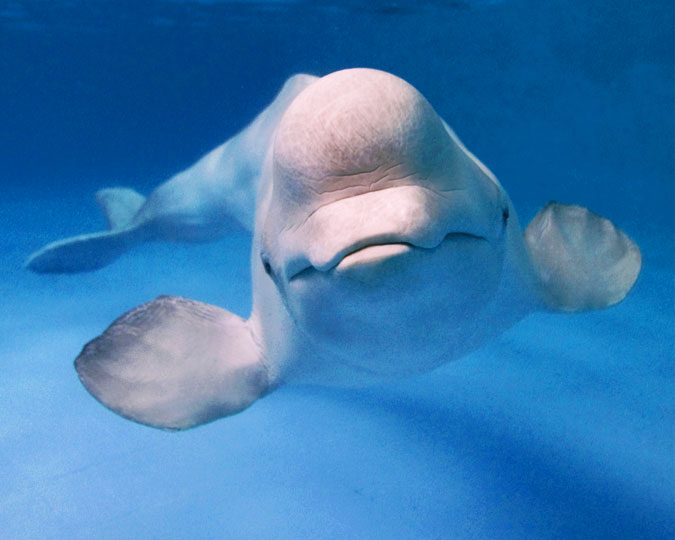Species Profile: The Cuvier’s Beaked Whale
The Cuvier’s Beaked Whale is a truly cosmopolitan mammal known for frequent stranding.
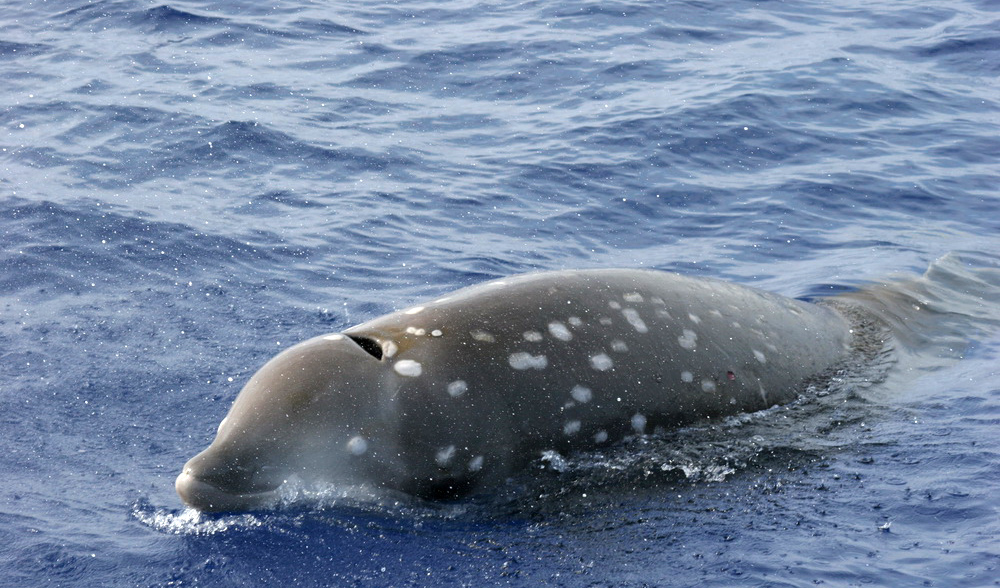
The Cuvier’s Beaked Whale is one of the smaller whale species and it’s widely distributed in most oceans and seas worldwide.
Though it’s so widely distributed, it prefers deep waters. As a result, not much is known about it except what researchers can gather by studying stranded individuals. Strangely, this species tends to strand more often than any of the other species of beaked whales.
Like other beaked whales, it has a cigar-shaped body and is often mistaken for other mesoplodont whales (a genus of toothed whales) at sea.
The Cuvier’s whale has a small, curved dorsal fin and small, narrow flippers that it tucks into pockets in the body wall. Its beak is relatively short compared to other whales in the same family. Individual whales vary in color from dark grey to reddish brown.
Adults are typically covered in scars and patches caused by bites from the cookiecutter sharks.
Cuvier’s beaked whales are listed as a Least Concern species by the IUCN.
1) Scientific Name
Ziphius Cavirostris
2) Scientific Classification:
- Kingdom: Animalia
- Phylum: Chordata
- Class: Mammalia
- Order: Artiodactyla
- Family: Ziphiidae
- Genus: Ziphius
- Species: Ziphius Cavirostris
3) Life Expectancy
They live for around 40 years.
4) Average/Maximum Length
An adult Cuvier’s beaked whale can grow to between 5 and 7 meters (16 and 23 feet) in length. This species does not exhibit significant size difference between both sexes.
5) Average/ Maximum Weight
About 2,500 kg (5,500 lbs.) with the largest recorded specimen weighing in at 3,000 kg (6,600 lbs.)
6) Maximum Swimming Speed
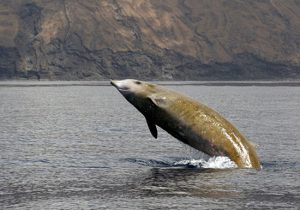
Not documented.
7) Interaction With/Danger To Humans
This animal is not targeted by whale hunters neither is there any record of it harming humans. Despite that, these whales have been turning up dead lately with large amounts of ingested plastic in their stomachs. That’s a direct indictment of the careless attitude of humans towards marine trash and plastic.
8) Reproduction Details
Females of this species attain sexual maturity at about 5.8 meters (19 feet), while males do the same at 5.5 meters (18 feet) long.
Newborn calves are between 2 and 3 meters (6.5 and 10 feet) and weigh approximately 272 kg (600 lbs.)
9) Diet/Hunting Pattern Of The Cuvier’s Beaked Whale
The preferred diet of this whale is a variety of deep-sea fish, several species of squid and crustaceans. And they will go to great lengths to find food!
When hunting, a Cuvier’s beaked whale can dive as deep as almost 3,000 meters (9,840 feet) and stay under for over 2 hours before resurfacing.
Scientists studying the Cuvier’s beaked whale in 2014 were astonished to see that it stayed underwater for 2 hours and 17 minutes before resurfacing.
10) Alternative Names
- Goose-beaked Whale
11) Population And Conservation Status
In the past, Japanese whalers caught between 3 and 35 of these whales every year until 1955. Also, there were several incidents of getting trapped as bycatch by Italian, Colombian, and American fisheries.
Presently, it’s protected by several international agreements for example ASCOBANS and the Western African Aquatic Mammals MoU, etc.
Strangely, this whale is known to have the highest incidence of stranding among whales. The theory is that this phenomenon is a direct result of marine noise from ocean-going vessels. In particular, mass strandings occur more in noisy waters like the Mediterranean Sea. Multiple mass strandings were also observed after operations by the Spanish Navy.
The estimated population for the Cuvier’s whale is 100,000 and it’s listed as a Least Concern species by the IUCN.
12) Ancestry And History
You may have wondered about the peculiar name of this whale species. Actually, it gets its common name from the French anatomist Georges Cuvier. Cuvier was the first person to describe this whale.
It’s scientific name Ziphius Cavirostris, is a combination of Greek xiphos, “sword”, and Latin words rostrum, “beak” and cavus “hollow.” Hollow refers to the deep indent (prenarial basin) in the skull.
At the time, the whale was so rare that Cuvier assumed it was an extinct species. However, another discovery of a stranded but living whale established it as an extant (still living) species.
Its closest relative is the Shepherd’s beaked whale (Tasmacetus Sheperdi).
13) Distribution and Habitat
The Cuvier’s beaked whale has the widest distribution among beaked whales worldwide. You’ll find it all over the globe except in the Arctic area.
They swim in the waters around Canada, parts of the USA, South Africa, Australia, New Zealand, the Caribbean and Mediterranean Seas, the Gulf of Mexico and so on.

